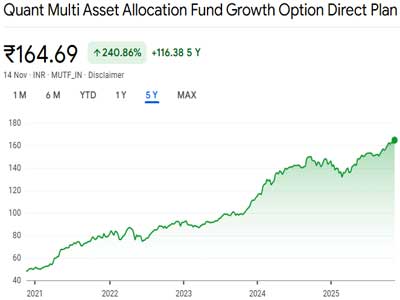The story of 24-year-old Anand from Mysuru is more than just inspiring; it is a blueprint for India's future. This young man, educated in a village school, now provides software solutions to American clients because a Bengaluru-based IT company saw his potential. He represents millions for whom the private sector isn't merely an employer—it is the primary engine of mobility, dignity, and national prosperity.
For decades, India’s economy was constrained by the belief that nation-building was the sole responsibility of the public sector. Inspired by outdated models, we built factories and airlines that became synonymous with losses, red tape, and corruption.
Read in Hindi: प्राइवेट सेक्टर बन चुका है भारत की अर्थव्यवस्था का धड़कता इंजन
The 1991 crisis was a painful but necessary awakening, forcing the dismantling of the license raj and opening doors to private enterprise. This was not just a policy shift; it was a matter of survival.
From independence until the 1990s, the belief was that nation-building rested solely on the public sector’s shoulders. Steel plants, heavy electrical factories, airlines, and telecom were all under government control, with the phrase ‘commanding heights’ gaining traction. Inspired by the Soviet model, plans were made, investments poured in, but the results often came in the form of losses and corruption.
Then came the turning point of 1991, when foreign exchange reserves were nearly depleted, and India had to pledge its gold. The economic crisis forced the country to break its shackles. At that time, PV Narasimha Rao and Finance Minister Dr Manmohan Singh took a historic step. The license raj was dismantled, doors opened to foreign investment, and private enterprises got room to breathe. From there, India gained new momentum.
After the Narendra Modi government came to power in 2014, the private sector was elevated from a partner to a captain. Even sensitive sectors, such as defence, saw private sector entry. Schemes like Make in India, Startup India, and Digital India widened the path for entrepreneurship. Government interference decreased, responsibility shifted to private hands, and the economy took a new leap.
The numbers bear witness to this change. In 2015, India had about 2.36 lakh dollar-millionaire households. A decade later, in 2025, this rose to 8.71 lakh—a fourfold increase. This isn’t just a count of the wealthy; it signals that an open world of private opportunities has given rise to new prosperity and aspirations.
India’s burgeoning startup ecosystem exemplifies this change. With over 100 unicorns and more than 1,50,000 recognised startups as of January 2025, entrepreneurs are building world-class companies from Tier-2 and Tier-3 cities, thanks to supportive incubation networks and rising venture capital. Platforms like Ola and Zomato have transformed how Indians live, work, and travel. The private sector now accounts for the largest share of job creation, catalysing upward mobility across demographics.
Government initiatives such as Make in India, Startup India, and Digital India have turned entrepreneurship into a national movement. Measures including tax holidays for startups, skill development programs, and large-scale R&D investments under Budget 2025 have spurred innovation, technological adoption, and sustainable growth—even in traditional sectors like manufacturing and defence.
India’s progress is visible in the numbers: GDP growth clocked 6.5 per cent in 2024–25, leading among major economies. Dollar-millionaire households rose from 2.36 lakh in 2015 to over 8.71 lakh by 2025—a fourfold increase representing broader prosperity and new opportunities, not just the enrichment of a few.
For decades after independence, India placed its faith in the public sector. Inspired by the Soviet model, steel plants, airlines, and telecom monopolies were seen as the ‘commanding heights’ of the economy. But red tape, inefficiency, and corruption meant that many of these ventures became loss-making burdens. Airlines flew—but at a loss. Factories existed—but rarely delivered.
By 1991, an economic crisis forced India to change course. Gold reserves were pledged, foreign exchange had dried up, and reforms became inevitable. Prime Minister PV Narasimha Rao and Finance Minister Dr Manmohan Singh dismantled the license raj, invited foreign investment, and freed private enterprise. That turning point ignited three decades of transformation.
The most visible change has come from technology. IT giants like TCS and Infosys connected small-town students to global careers. Reliance Jio democratized data, taking the internet to tea stalls and villages. What once required a bank trip can now be done on a smartphone—whether buying seeds, checking the weather, or receiving subsidies.
Startups accelerated the momentum. Flipkart began with two friends selling books in a Bengaluru apartment and became an e-commerce giant. Ola turned the pain of hailing a taxi into a click on an app. Today, India has over 100 unicorns and more than 1,50,000 registered startups, many rising from Tier-2 and Tier-3 cities.
Government initiatives like Make in India, Startup India, and Digital India turned entrepreneurship into a national movement. The Modi government went further, allowing private investment in sensitive areas like defence. Tax holidays, incubation networks, and R&D support have helped ideas grow into industries.
This policy shift has transformed the private sector from being just a partner to becoming the captain of India’s economic ship.


















Related Items
Indian roads have become a gateway to hell due to canine, simian nuisance
Redefining Indian Highways; Driving innovation, Delivering connectivity…
India’s deep dark fraud economy unveiled…